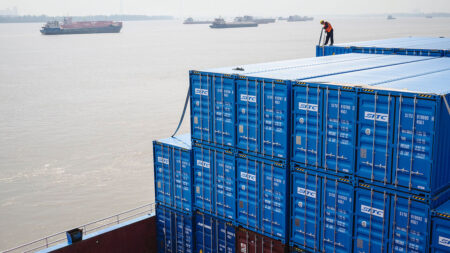The ongoing trade war between the United States and China has emerged as a significant and unexpected catalyst for market volatility, catching many investors and financial analysts off guard. The events began to accelerate on April 3rd, when President Donald Trump unveiled a sweeping set of tariffs aimed primarily at Chinese goods, which signaled a shift towards a more protectionist stance in U.S. trade policy. This announcement had immediate repercussions; on that day, the Russell 3000 index, representing a broad swath of the American stock market, plummeted by 5%, reflecting the apprehension among investors about the potential economic fallout from impending tariffs.
As the dust settled from Trump’s protraction of trade hostilities, the situation escalated further on April 4th. China retaliated decisively, announcing its own tariffs, which were set at a staggering 34% on a wide range of American goods. Such a massive duty on imports from the U.S. not only sparked a sharp reaction in financial markets but also initiated a wave of apprehension about the potential for a full-blown trade war. The consequences of this action were swift; market sentiment deteriorated rapidly, and the Russell 3000 index experienced an additional decline of 6%. This sequence of events laid bare the fragility of the markets and showcased the rapidly shifting dynamics of international trade relations.
Investors were quick to respond to the volatile landscape created by these developments. The pricing observed across various asset classes told a story of deepening concern regarding economic stability. For instance, not just equities but also commodities, bonds, and currencies began to reflect a heightened risk premium, a clear signal that the market was increasingly leaning towards the expectation of a significant economic slowdown. Safe-haven assets, such as gold and government bonds, benefited as investors sought refuge from the turbulence caused by trade tensions.
Moreover, the overarching fear of slowed economic growth emanating from escalating tariffs and counter-tariffs began to weave its way into corporate earnings projections. Analysts and business leaders alike voiced their worries that the trade conflict could undermine consumer confidence, disrupt supply chains, and curtail business investment. This mounting anxiety over future profits resulted in downward adjustments in earnings forecasts for a wide range of publicly traded companies, particularly those that rely heavily on international trade.
As the trade war unfolded, it was not just the immediate impacts of tariffs that spurred concern among market participants. The broader ramifications for global economic interdependence began to crystallize, as the world had entered an era characterized by deeply entrenched supply chains and multinational corporate structures. The retaliatory measures taken by both the U.S. and China signaled a potential decoupling of the two largest economies, raising questions about the long-term viability of global trade norms that had been established over decades.
In summary, the rapid escalation of the trade war between the United States and China represents a highly complex and sensitive issue that has the power to reshape economic realities for both nations and beyond. The stark declines observed in stock indices such as the Russell 3000 are more than just numerical dips; they encapsulate a palpable fear of what could lay ahead if hostilities continue to amplify. Investors, businesses, and policymakers must now navigate a landscape riddled with uncertainty, marked by the need for strategic adaptations to mitigate risks as the global economic order stands on shaky ground. The true extent of the trade war’s implications may yet unfold in the months and years to come, as its potential to influence the global economy hangs in the balance.









